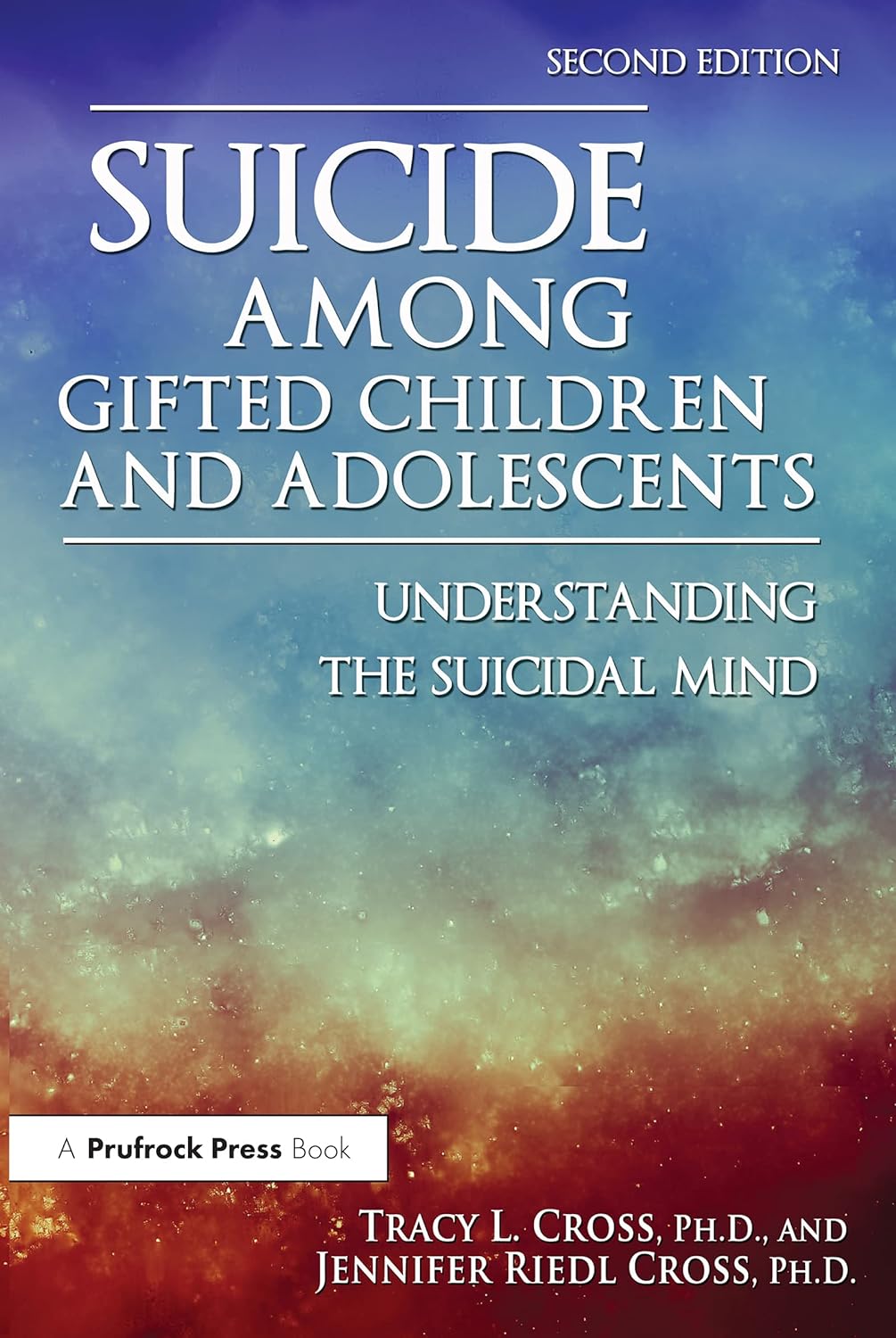Suicide Among Gifted Children and Adolescents: Understanding the Suicidal Mind

It’s a concerning question for parents of children who are considered “gifted” intellectually. Suicide Among Gifted Children and Adolescents: Understanding the Suicidal Mind doesn’t answer the question about whether these children are more or less likely to die by suicide. Citing conflicting research, no conclusion is drawn. However, there is work to surface the factors that lead to these conflicting results.
Theory of Suicide – Suicide Trajectory Model
One serious limitation to the book is the choice of primary model. They chose the suicide trajectory model put forth by Stillion and McDowell. This isn’t a popular model, rarely appearing even in the child development context under which it’s borne. It has some similarities to Rudd et al.’s fluid vulnerability model (see Brief Cognitive-Behavioral Therapy for Suicide Prevention), and it seems to map out Pathways to Suicide, like Ron Maris’ book. However, while predisposing, contributing, precipitating, and protective factors are reviewed, they don’t form a pathway as much as they represent a set of factors at the individual, family, peer, school, community, and sociopolitical levels.
The problem is that these aren’t discriminating factors. While citing articles of M. David Rudd and his colleagues, it seems as if Cross misses the central point that we don’t have discriminating factors, and we need to find them. More recently, Craig Bryan explains why our capacity to predict suicide is unlikely to get specific. (See Rethinking Suicide.) This is consistent with research showing that many attempters (who survived) didn’t think about suicide for more than an hour. Commonly, around 70% of attempters hadn’t considered it more than an hour or two before the act. It’s hard to build a prediction framework with these kinds of timeframes.
The Myths
Like many others, Cross falls into the trap of describing “myths” about suicide. The first “myth” is that “Suicide occurs without warning.” Clearly, that’s true for some people (≥70%). “Myth” four is, “If a gifted young person wants to commit [sic] suicide, very little can stop him or her.” Here, nuance is important. Certainly, if they are determined to die, they will. They’ll lie, or they’ll find lethal means that you wouldn’t think to protect them from. (See Suicide: Inside and Out for more.) However, the nuance is whether or not they’ll have an honest conversation about their suicidal ideation with you. Techniques like Motivational Interviewing can help open people up to the idea – as long as the coercive forces aren’t too strong.
The “myths” reflect historical thinking about suicide. While many continue to believe the myths as stated, we’re beginning to realize that the old ideas aren’t necessarily true.
Perfectionism
The most consistent finding for impact in suicidality is perfectionism. This occurs among the gifted and the normal. However, perfectionism flows through the sense of agency or growth mindset that Carol Dweck explains in Mindset. It’s consistent with Harris’ work in No Two Alike. In short, a small amount of dispositional difference – even among twins – will result in tendencies towards and away from things, like academic excellence. (See Perfectionism for more on the topic.)
The Meaning of Gifted
Cross’ work is challenged by the lack of a consistent definition of what “gifted” means. Is it high IQ or mental aptitude in a certain way? (See Howard Gardner’s Extraordinary Minds for more.) Is it performing above the required standard?
One relatively common understanding is the experience of being gifted. The experience is often described as “feeling different.” I certainly felt – and feel – that. To be clear, for most, it’s not necessarily better – it’s different. It’s a curiosity about what is wrong with me, or why am I different?
Psychache
Cross ends with a call back to Shneidman’s work on psychache and the need to eliminate it if we want to take care of others. (See The Suicidal Mind for more on psychache.) The need to increase feelings of a life worth living in the person and eliminate their pain is, however, universal to all humans. It’s not specific to either gifted or youth. It can be that if we want to prevent Suicide Among Gifted Children and Adolescents, we’ll need to just prevent it among all children and adolescents.
